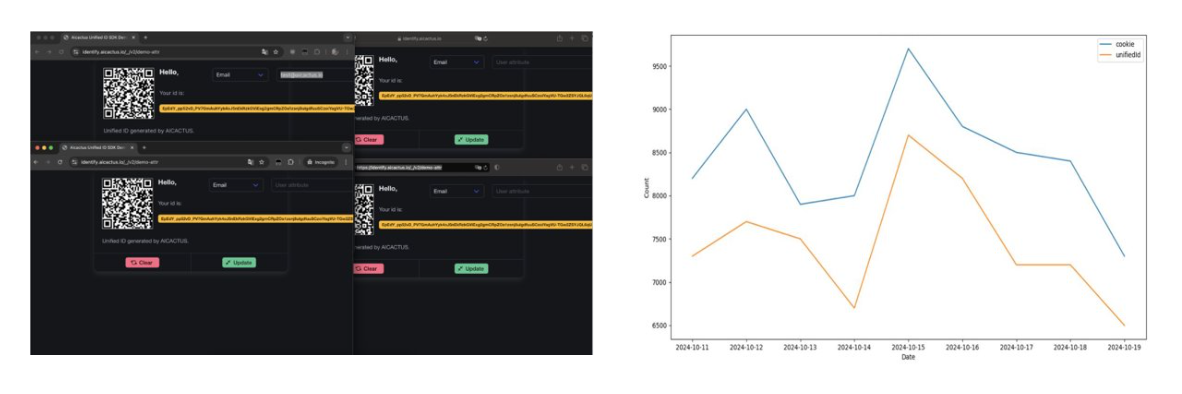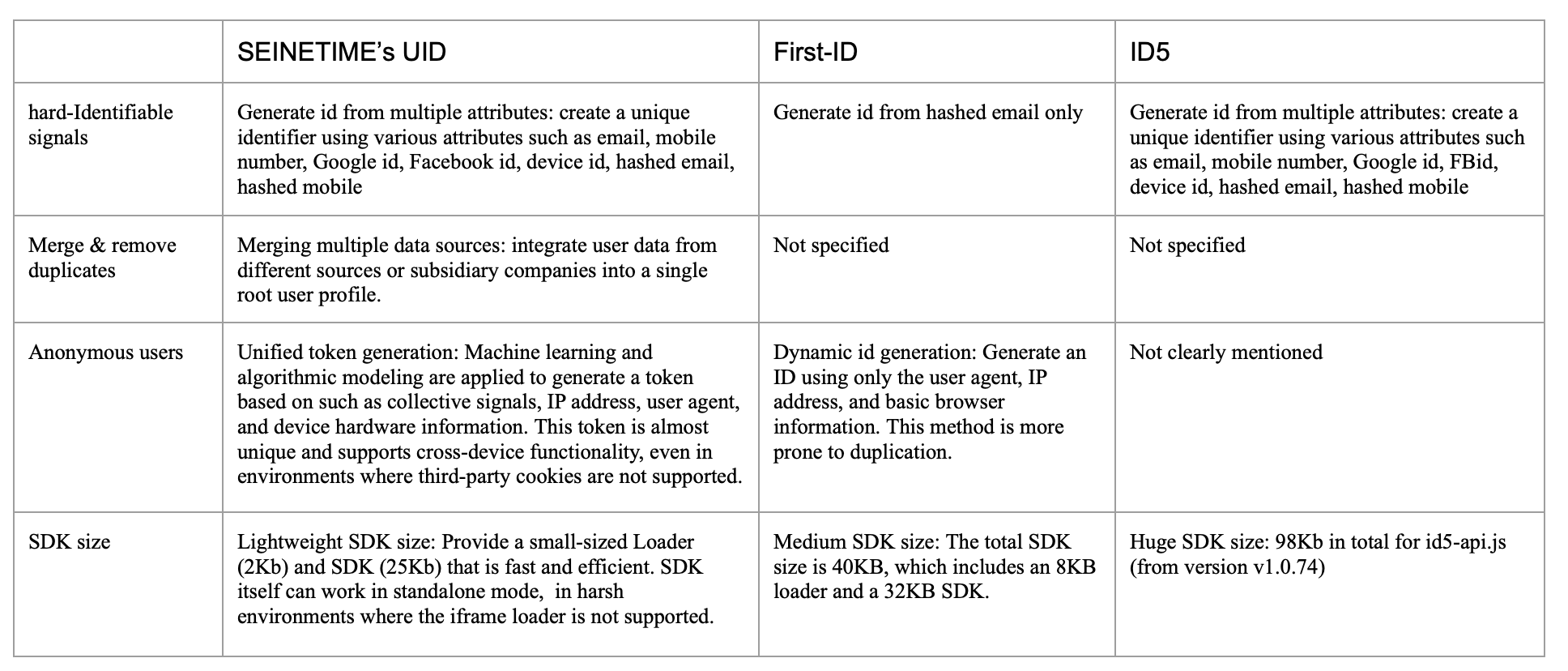Copyright © 2025 Seinetime. All rights reserved.
A privacy-first identity solution that creates unified, consented user profiles across platforms, cross-browser, and cross-device without third-party cookies, enabling accurate targeting and personalization while ensuring regulatory compliance.

Our proprietary Unified Identity is a privacy-first identity solution designed to create a consistent, secure view of users across platforms, devices, and ecosystems — without relying on third-party cookies. It enables organizations to recognize and engage users through a persistent, consented identity that respects data privacy standards and user choice.
By stitching together fragmented identifiers into a unified user profile, the system empowers more accurate targeting, personalization, and measurement across digital touchpoints. Built to support interoperability with leading adtech, martech, and data platforms, it ensures seamless integration and scalability.
With compliance at its core (GDPR, CCPA, and beyond), Unified Identity Management gives businesses the tools to build trusted relationships with users while maximizing addressability and long-term value.
Cookieless Identity Resolution - Creates persistent user identities without relying on third-party cookies through first-party data and consented identifiers
Cross-Platform Stitching - Links fragmented identifiers across devices, platforms, and ecosystems into unified user profiles
Consent-Based Matching - Respects user privacy choices and data consent preferences while maintaining identity consistency
Interoperable Integration - Seamlessly connects with leading adtech, martech, and data platforms for scalable deployment
Privacy-Compliant Architecture - Built with GDPR, CCPA, and other regulatory requirements as core design principles
Privacy-First Approach - Maintains user trust through transparent, consented identity management that respects data privacy standards
Enhanced Addressability - Maximizes reach and targeting accuracy without dependence on third-party cookies
Unified User View - Creates consistent, comprehensive user profiles across all digital touchpoints and devices
Regulatory Compliance - Ensures adherence to GDPR, CCPA, and evolving privacy regulations automatically
Platform Interoperability - Integrates seamlessly with existing adtech, martech, and data infrastructure
Future-Proof Solution - Adapts to evolving privacy landscape and cookieless advertising environment
Cross-Device Targeting - Deliver consistent, personalized experiences as users move between devices and platforms
Audience Segmentation - Create accurate, privacy-compliant audience segments for marketing and advertising campaigns
Personalization Engines - Power content and product recommendations with unified user insights across touchpoints
Attribution & Measurement - Track campaign performance and user journeys accurately without third-party cookies
Customer Data Activation - Enhance first-party data with unified identity for improved marketing effectiveness
Compliance Management - Automatically manage consent preferences and privacy requirements across all user interactions
We conducted benchmarking tests with an early client to evaluate two key aspects:
As shown in the following figure on the left, our Unified ID successfully identifies the same user across two different browsers (e.g., Chrome and Safari), in both standard and private browsing modes (Note: third-party cookies do not work in Safari and private modes).
The figure on the right compares the performance of our method against first-party cookies on the same device, tested on a real e-commerce website with over 1 million monthly visitors. The results show that our solution can reduce duplicate user profiles by approximately 15–20% per week — significantly lowering computational costs and increasing user engagement.
The table provides a theoretical comparison between our solution and two widely used alternatives in digital marketing. Four key properties are evaluated: (i) availability of hard-identifiable signals, (ii) ability to merge and deduplicate user profiles dynamically, (iii) support for anonymous users, and (iv) SDK size.
As shown on the table, our Unified ID performs comparably to state-of-the-art solutions, and even outperforms them in certain scenarios, such as private browsing mode and cross-browser identification. It’s important to note that solutions relying solely on first-party cookies are vulnerable to common user behaviours — like regularly clearing browsing history, which causes IDs to change frequently over time.


Copyright © 2025 Seinetime. All rights reserved.